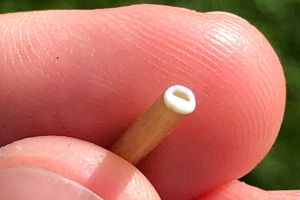

My grandma lived to the ripe old age of 93 so I remember most of the advice she gave me.
She was always a glass-half-full type, and if there were lemons, we made lemonade for sure. Here are 7 of her tips straight from the horse’s mouth.
Sweet As Honey
Most of you know that honey is used in cold remedies. However, my grandma taught me that honey is the cure for embarrassment too because when dandruff dusted my shoulders as a teenager, she made a potion with a jar of honey that I will never forget.
She mixed 3 teaspoons of honey in a bowl with 3 teaspoons of vegetable oil, which she stirred into a paste, and then covered my hair with it. Nowadays I guess we call this conditioner.
She left it on there for about 20 minutes and rinsed it off to reveal shiny hair with no white flakes on my black sweater. Use it weekly to prevent dandruff.
Wart Removal
All parts of the dandelion are edible except the stem.
Although the sap in the stem is an irritant and can cause upset stomachs if consumed, it also has an ancient use. My grandma showed me how to pick a stem and examine the sap that oozes out.
You can place this directly on a wart without touching it, and the sap works on that! If you reapply the sap every week for about 5-6 weeks, the warts seem to turn black and eventually just drop off.
Emergency First Aid Grandma Style
Many of you know if you get stung by nettles, reach for a dock leaf and rub the sting vigorously to help
Mullein
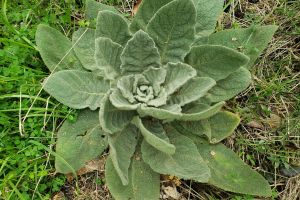 To stop a bleeding cut, Grandma used to look around for a rosette of light green, furry leaves with a central flower stalk. This is Mullein. Try wrapping a whole soft leaf around the area after cleaning the wound with a little water.
To stop a bleeding cut, Grandma used to look around for a rosette of light green, furry leaves with a central flower stalk. This is Mullein. Try wrapping a whole soft leaf around the area after cleaning the wound with a little water.
Related: 15 Survival Plants You Should Hide From Your Neighbours
Cattails
If you walk near a pond, you may see Cattails growing, which were used by Native Americans as food but also as wound healers.
Dig out a piece of the root, cut it through the center, and wrap it around the affected area. Use grass or a leaf to tie it in position, if you don’t have plasters or bandages. It stops bleeding and helps to heal wounds.
Aloe Vera
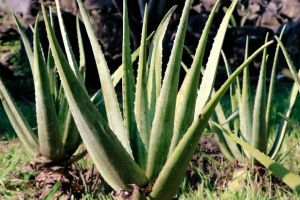 At home, if you have a cut or a sting, my Grandma’s traditional way was magic. “This is magical stuff,” she used to say while cutting a piece from an Aloe Vera leaf.
At home, if you have a cut or a sting, my Grandma’s traditional way was magic. “This is magical stuff,” she used to say while cutting a piece from an Aloe Vera leaf.
She cut off the spiky edges to reveal clear gel inside, and watching her stopped my tears instantly.
Modern science shows that Aloe Vera does indeed help wounds. Just wipe any wound with it. You can freeze tiny strips of leftover leaf to use to soothe burns in the future, straight from the freezer.
Mosquito Repellent
If you dread getting bitten outdoors at dusk, Grandma grew lavender close to the seating area and told us to sit next to it on a terrace. Another idea is to pick fresh lavender and place it on the table to keep mosquitoes at bay.
⇒ Buy Here Lavender Seeds And Other Seeds You Need To Start Your Medicinal Herb Garden
Other plants mosquitoes loathe include strong-smelling herbs like basil, elderflower, rosemary, or mint so put a few decorative sprigs of herbs and lavender with elderflower leaves and twigs to turn those mozzies around.
Elder – One Tree For Sore Eyes Or Flu Remedies
Elderflowers have a sweet delicate taste that Grandma used to make lemonade in May, and she explained that elderflowers are also an antihistamine if you take them before the worst of the pollen is airborne.
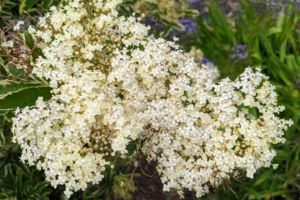 The flower infusion can be tried as an eyewash for sore eyes affected by pollen.
The flower infusion can be tried as an eyewash for sore eyes affected by pollen.
Cut several bunches of flowers, remove the stems, and place them in a bowl of water and leave it covered for 3-4 hours. Then fill a glass to wash each eye out carefully to soothe the soreness.
Grandma always advised leaving some flowers or there would be no berries. These berries make a fantastic cough mixture so pick them when they are all black from September onward.
Elderberries contain Sambucol, which in recent tests cured flu in less time than conventional over-the-counter medication, so my grandma knew what she was talking about.
To make the cough mixture, remove any stem or green berries, use 2 cups of berries to 1 cup of sugar, add a little water to cover the berries, and bring it to a boil. You can add spices like cloves, cinnamon, or whatever you like.
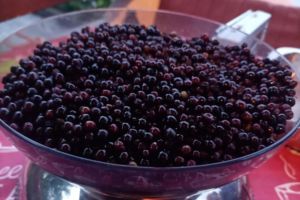 I can still hear Grandma saying as it comes to a boil, “Don’t boil away all the goodness!” so turn down that heat, add the juice of a lemon, and let it simmer for 20 minutes.
I can still hear Grandma saying as it comes to a boil, “Don’t boil away all the goodness!” so turn down that heat, add the juice of a lemon, and let it simmer for 20 minutes.
Then strain the mixture into clean bottles to remove the seeds. Take a spoonful a day as a preventative.
When you feel a cold or flu coming on, take two spoonfuls a day. It is best to make it fresh when needed, as the mixture will only last a month in the fridge.
Nothing Is Wasted
My grandma believed in no waste, so almost everything was reused or composted before it ever ended up in the trash. All glass jars with lids were carefully washed and stored for making preserves and canning.
Old newspapers were wrapped around presents which were then decorated with colored pens. Nettle soup was a favorite in her house. Stale bread was saved for Sunday roast stuffing, or she made bread and butter pudding.
Save any stale bread in a bag and then butter it in a baking dish, add layers of fresh raspberries and strawberry or homemade jelly, top it with milk, and then bake it for 20 minutes until soft.
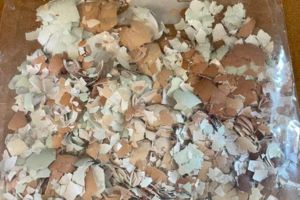 Broken cup handles were glued together again, and eggshells were crumbled around new seedlings, while bones from dinner made soup the following day.
Broken cup handles were glued together again, and eggshells were crumbled around new seedlings, while bones from dinner made soup the following day.
Winter pudding used blackberries, leftover apples, dried raisins, or canned fruit. To see more about canning, see the next tip.
A Full Root Cellar
My grandma always worried that a thick snowfall would cut us off from transport and the local store. That’s why she had a root cellar and she taught me the skill of canning and making preserves.
She accepted donations from neighbors and rewarded them with a jar of jelly. If you don’t have an orchard, then visit a fruit farm and pick strawberries, raspberries, blueberries, apricots, and plums in summer.
Pears and apples come a bit later in the fall. Eat everything you can fresh but the rest can be made into jelly, canned, made into juice or wine, or dehydrated.
If you don’t have a root cellar, learn here how to build your own root cellar for cheap and keep all the jars and supplies organized.
Wild fruit depends on your state but can include blackberries, rosehips, passionfruit, sloes, and many fruits picked by Native Americans including cranberries, chokecherries, huckleberries, and prickly pears.
“Wear gloves!” was grandma’s advice as some of this fruit also has thorns. Learn how to collect fruit, add sugar, and boil it so that it will set, and then make a cool storage area in your cupboard for sweet treats in winter.
You already have a stash of jars from tip 6, so sterilize them and then fill them with fruit jelly.
No matter what happened during the day grandma always said “Don’t let the sun go down on your anger”.
I still say this to my child because her philosophy means I am at peace at bedtime and it does not fester inside. I prefer to only hold onto the advice that makes me smile or is still useful.
So now my 7 tips are safely passed on to you. Here’s hoping my Grandma’s tips help you!
You may also like:
 How to Build an Endless Hot Water System (Without Electricity)
How to Build an Endless Hot Water System (Without Electricity)
Three Powerful Remedies To Keep On Hand In A Crisis (Video)
Could An EMP Be Putin’s Revenge Against America?
The First States That Will Go Down In A Collapse. Do You Live In The Red Zone?
